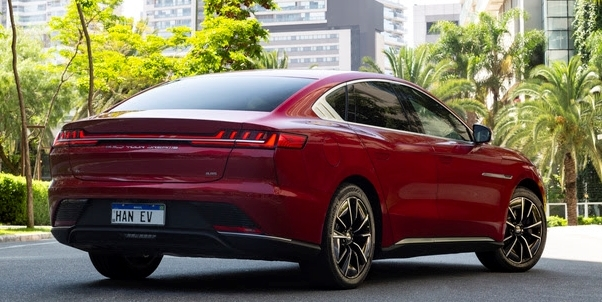In 2024, the landscape of electric vehicles (EVs) is set to transform dramatically, thanks to enhanced EV tax credits that are making these cars more affordable than ever. According to a recent report by Bloomberg Green, EV sales are expected to surpass 20 million units globally by 2025, underscoring a significant shift in consumer preferences driven by both environmental concerns and economic incentives. This article explores how the 2024 EV tax credits are reshaping the market, making EVs accessible to a broader audience, and what potential buyers need to know about these incentives.
Understanding the 2024 EV Tax Credits
What Are EV Tax Credits?
Electric vehicle tax credits are government incentives designed to encourage consumers to purchase EVs. These tax credits can significantly reduce the upfront cost of buying an electric car, making them more competitive with traditional gasoline-powered vehicles. In 2024, these credits have been expanded in many regions, including the United States and parts of Europe, to accelerate the transition to sustainable transport.
Key Changes in 2024
The 2024 tax credits introduce several crucial changes:
- Increased Credit Amounts: In the US, the maximum federal tax credit for qualifying EVs has increased to $7,500. Some state-specific incentives can add an additional $2,000 to $5,000, depending on the state.
- Income-Based Eligibility: To ensure the credits benefit middle and lower-income families, eligibility is now based on income brackets. For instance, households earning up to $150,000 annually are eligible for the full credit.
- Expanded Vehicle Eligibility: EV models from popular brands like Tesla, Rivian, and Hyundai now qualify for these credits, including previously excluded high-performance models.
How to Qualify for EV Tax Credits
Eligibility usually depends on several factors:
- Vehicle Type: The car must be a new EV or plug-in hybrid.
- Income Bracket: Verify your household income against the eligibility requirements.
- Purchase Date: The vehicle must be purchased within the tax year to qualify.
The Financial Impact of EV Tax Credits
Cost Savings and Long-Term Benefits
The economic benefits of these tax credits are substantial. Here’s how they break down:
- Upfront Cost Reduction: With a potential $12,500 in combined federal and state incentives, the purchase price of an EV can decrease significantly. For example, a Hyundai Ioniq 5 priced at $44,000 may end up costing just $31,500 after applying the full credit.
- Lower Operating Costs: EVs are cheaper to maintain than gasoline vehicles. They have fewer moving parts, which means fewer repairs and lower servicing costs.
- Fuel Savings: Charging an EV costs considerably less than filling up a gasoline tank. According to the IEA, EVs can save owners up to $800 annually in energy costs.
Real-World Adaptation: Charging Infrastructure
One of the main concerns for potential EV buyers is the availability of charging infrastructure. Fortunately, significant investments are being made globally:
- Increased Charging Stations: The number of public charging stations in the US has risen by 40% in the past year, according to InsideEVs, making long-distance travel more feasible for EV owners.
- Home Charging Options: Many EV manufacturers, like Tesla and Ford, offer home charging solutions, allowing users to charge overnight at lower electricity rates.
Choosing the Right EV: A Comparative Guide
Factors to Consider
When selecting an EV, consider the following:
- Range: Compare models based on range per charge. For example, the Tesla Model 3 offers a range of up to 353 miles, while the Nissan Leaf provides around 226 miles.
- Charging Speed: Fast-charging capabilities can be a game-changer, especially for frequent travelers. The Lucid Air, for instance, can gain 300 miles of range in just 20 minutes.
- Features and Comfort: Look for features that match your lifestyle, such as cargo space, infotainment systems, and safety ratings.
Top EV Models to Consider in 2024
Here are some top contenders:
- Tesla Model 3: Known for its impressive range and robust technology.
- Hyundai Ioniq 5: Praised for its futuristic design and fast charging.
- Ford Mustang Mach-E: Offers a blend of performance and practicality.
- Rivian R1T: Perfect for adventure enthusiasts with its off-road capabilities.
The Future of EV Adoption
Trends to Watch
As tax credits continue to incentivize EV purchases, several trends are emerging:
- Increased Model Availability: More brands, including traditional automakers like Volkswagen and newcomers like Lucid Motors, are expanding their EV offerings.
- Technological Advancements: Improvements in battery technology, such as solid-state batteries, promise longer ranges and shorter charging times.
- Sustainability Focus: Consumers are increasingly considering the environmental impact of their purchases, driving demand for eco-friendly transport options.
Conclusion
The 2024 EV tax credits are a pivotal factor in making electric cars more affordable and accessible. By reducing upfront costs and encouraging the adoption of sustainable transportation, these incentives are facilitating a greener future. As you consider making the switch to an EV, remember to explore the various models and incentives available to find the best fit for your lifestyle. Which EV are you most excited to test drive this year? With continued innovations and expanding infrastructure, the road ahead for electric vehicles looks promising and bright.

